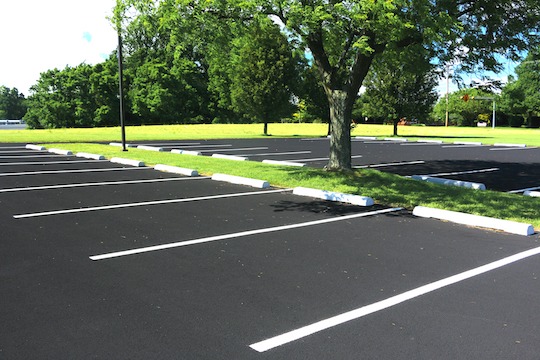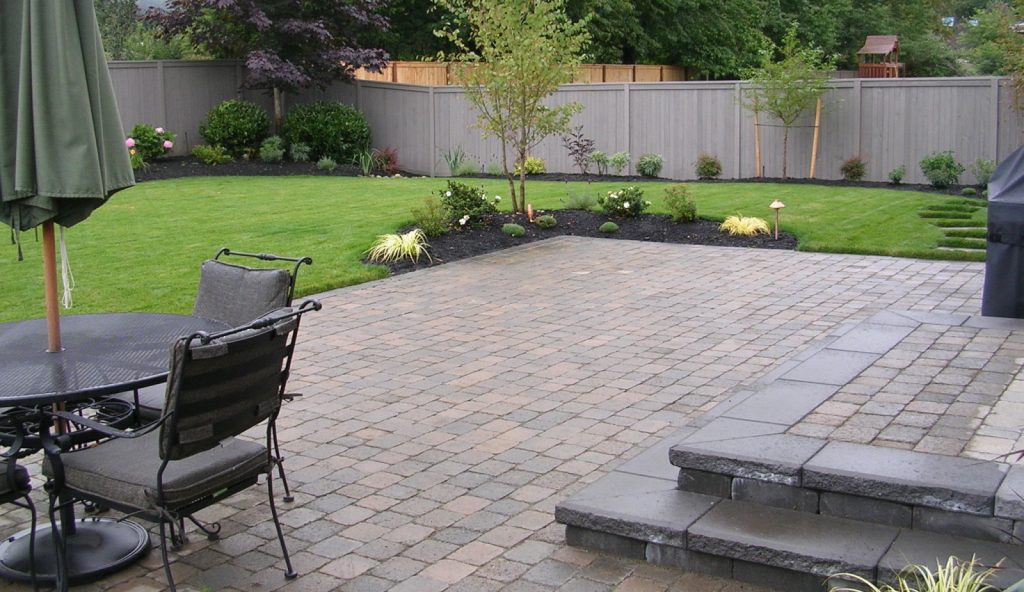An ounce of prevention is very much worth a pound of cure where it comes to pavement and parking areas. The best approach is regular maintenance.
Here’s a little-known fact of property management: Motor oil spots on asphalt parking lots can lead to pavement deterioration. Parking lot contractors understand this. Property managers, not so much.
How can that be when the key component of asphalt is bitumen, a residue of petroleum distillation? Intuition might suggest it contributes to the makeup of the parking lot surface. In this case, intuition is wrong. Untreated oil stains on asphalt pavement can actually dissolve the bitumen, which is the binder holding together stone aggregate and sand (the other ingredients in asphalt). Commercial cleaning products made for oil stain removal should be applied as soon as oil stains are found (for spot cleaning, cat litter or cola soda can work).
Which gets to the point of knowing your parking areas. Seeing certain problems before they get bigger can save a lot of pavement, and costs for pavement replacement in the long run – and that happens while performing regular maintenance tasks. The savvy property manager who wishes to keep money that normally would go to an asphalt pavement company will do the following to keep the asphalt surface intact as long as possible:
Cleaning and drainage: Sweeping the lot isn’t just about getting rid of litter and creating a nice appearance. It can help prevent clogging of stormwater drains, which might otherwise hold water back in such a way as to flood the pavement. This is problematic because standing water, particularly in freeze-thaw conditions, gets into and under small fissures in the asphalt. Over time, that leads to bigger cracks and even potholes.
Repairing cracks, using sealcoating: When cracks are identified – during the cleaning process or otherwise – it’s useful to repair them as soon as possible. Anything that falls into them, from water to tiny weed seeds, can pry them open and undermine the surface. Professional sealcoating can fill many smaller cracks and prevent oxidization of the pavement.
Freshen, or reconfigure, striping: Over time the paint on the pavement wears off. Not only does this present the possibility of accidents and parking spot disagreements, it also might be a chance for changing traffic patterns. Wayfinding specialists can determine if such a change might improve traffic flow and safety. But this might also be a means for shifting traffic patterns to reduce wear in certain areas (as one might do by rotating area rugs in the home).
Revisit lighting and landscaping: Modern lighting systems using LED technologies enable lower costs and better security and visibility. From time to time it makes sense to reassess how the lighting might be changed for the better. Landscaping might reduce summertime “heat island” effects of a surface parking lot or absorb rainfall drainage, but work with a landscape professional to choose trees and other flora that do not cause pavement heave from aggressive roots.
When pavement fails it might need a pavement overlay (replacement of the very top layer) or a complete repaving. Both are progressively more expensive and can be prevented for years by way of these other maintenance practices.


